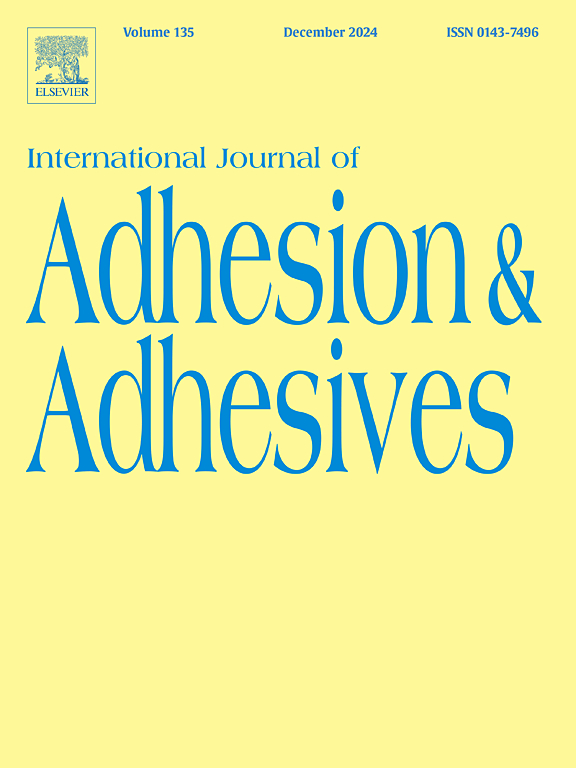Modification and preparation of a bio-based Jatropha curcas L. wood adhesive with bonding strength and water-resistance by oxidation method
IF 3.2
3区 材料科学
Q2 ENGINEERING, CHEMICAL
International Journal of Adhesion and Adhesives
Pub Date : 2024-12-09
DOI:10.1016/j.ijadhadh.2024.103921
引用次数: 0
Abstract
To further improve the mechanical performances of Jatropha curcas L. protein adhesives, more glucose was added to Jatropha curcas L. flour to prepare Jatropha curcas L. protein adhesives (JPG-KMnO4) by oxidation method. The study was conducted to examine the impact of glucose on the bonding strength of Jatropha curcas L. protein adhesive. Additionally, the procedure of preparing Jatropha curcas L. protein adhesive was explored. The performances of Jatropha curcas L. protein adhesives were also analyzed via differential scanning calorimetry (DSC), dynamic thermomechanical analysis (DMA), fourier transform-infrared spectrometry (FT-IR), X-ray photoelectron spectroscopy (XPS), and thermogravimetry (TG). The results showed the incorporation of glucose into Jatropha curcas L. flour form to more -CHO that reacted with -NH2 on Jatropha curcas L. proteins by the Schiff base reaction. The JPG-KMnO4 adhesive exhibits increases of 74 %, 27 %, and 11 % in dry shear strength, wet shear strength in cold water, and wet shear strength in hot water, respectively. The residual rate of the JPG-KMnO4 adhesive exhibits increases of 4.2 % and 10.5 % in cold water and hot water, respectively.
求助全文
约1分钟内获得全文
求助全文
来源期刊

International Journal of Adhesion and Adhesives
工程技术-材料科学:综合
CiteScore
6.90
自引率
8.80%
发文量
200
审稿时长
8.3 months
期刊介绍:
The International Journal of Adhesion and Adhesives draws together the many aspects of the science and technology of adhesive materials, from fundamental research and development work to industrial applications. Subject areas covered include: interfacial interactions, surface chemistry, methods of testing, accumulation of test data on physical and mechanical properties, environmental effects, new adhesive materials, sealants, design of bonded joints, and manufacturing technology.
 求助内容:
求助内容: 应助结果提醒方式:
应助结果提醒方式:


